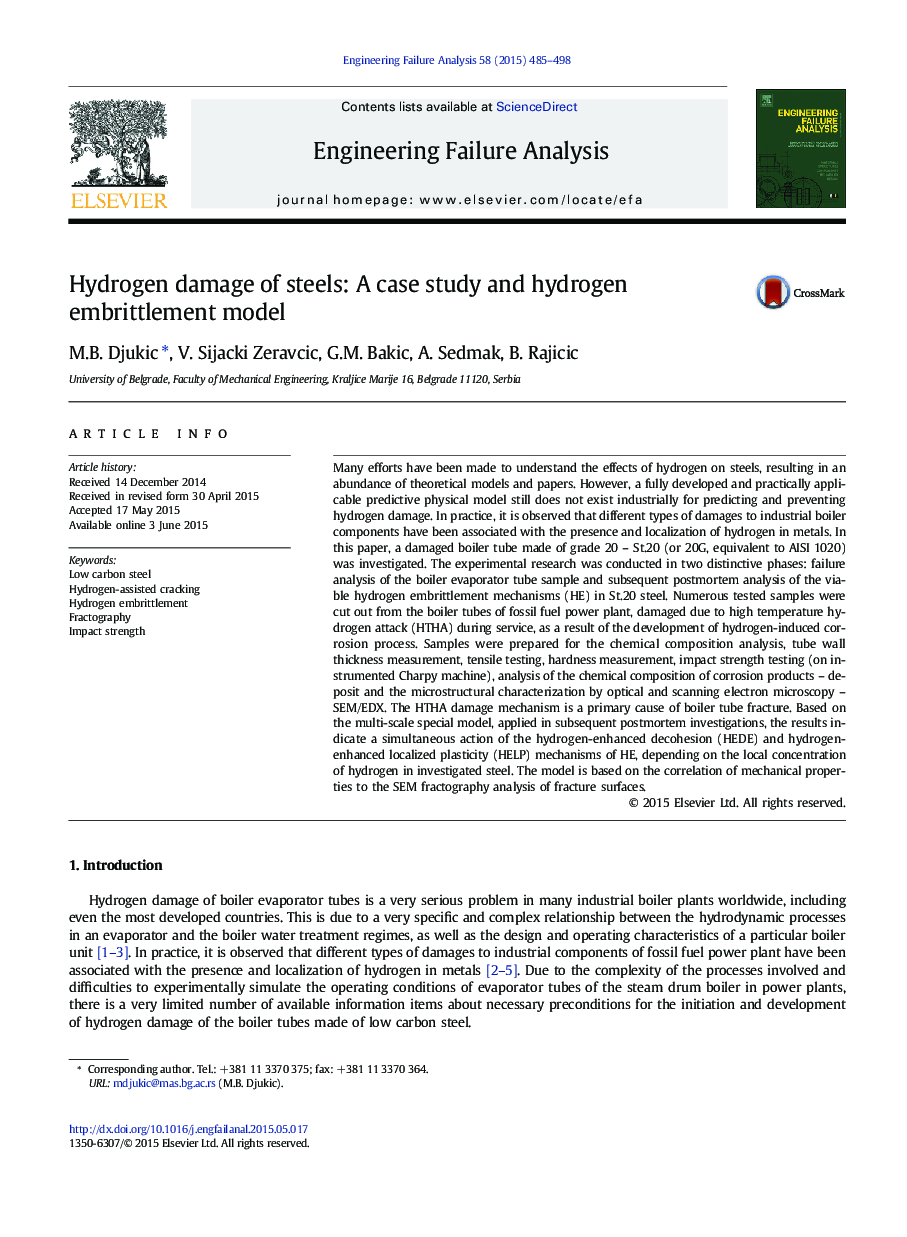| Article ID | Journal | Published Year | Pages | File Type |
|---|---|---|---|---|
| 768436 | Engineering Failure Analysis | 2015 | 14 Pages |
•Hydrogen damage of the boiler evaporator tube, made of carbon steel, was investigated.•The high temperature hydrogen attack is a primary cause of boiler tube fracture.•Postmortem analysis of the hydrogen embrittlement mechanisms was carried out.•Experiment is based on the correlation of mechanical properties to SEM fractography.•Simultaneous action of the hydrogen embrittlement mechanism, HELP + HEDE, were detected.
Many efforts have been made to understand the effects of hydrogen on steels, resulting in an abundance of theoretical models and papers. However, a fully developed and practically applicable predictive physical model still does not exist industrially for predicting and preventing hydrogen damage. In practice, it is observed that different types of damages to industrial boiler components have been associated with the presence and localization of hydrogen in metals. In this paper, a damaged boiler tube made of grade 20 – St.20 (or 20G, equivalent to AISI 1020) was investigated. The experimental research was conducted in two distinctive phases: failure analysis of the boiler evaporator tube sample and subsequent postmortem analysis of the viable hydrogen embrittlement mechanisms (HE) in St.20 steel. Numerous tested samples were cut out from the boiler tubes of fossil fuel power plant, damaged due to high temperature hydrogen attack (HTHA) during service, as a result of the development of hydrogen-induced corrosion process. Samples were prepared for the chemical composition analysis, tube wall thickness measurement, tensile testing, hardness measurement, impact strength testing (on instrumented Charpy machine), analysis of the chemical composition of corrosion products – deposit and the microstructural characterization by optical and scanning electron microscopy – SEM/EDX. The HTHA damage mechanism is a primary cause of boiler tube fracture. Based on the multi-scale special model, applied in subsequent postmortem investigations, the results indicate a simultaneous action of the hydrogen-enhanced decohesion (HEDE) and hydrogen-enhanced localized plasticity (HELP) mechanisms of HE, depending on the local concentration of hydrogen in investigated steel. The model is based on the correlation of mechanical properties to the SEM fractography analysis of fracture surfaces.
